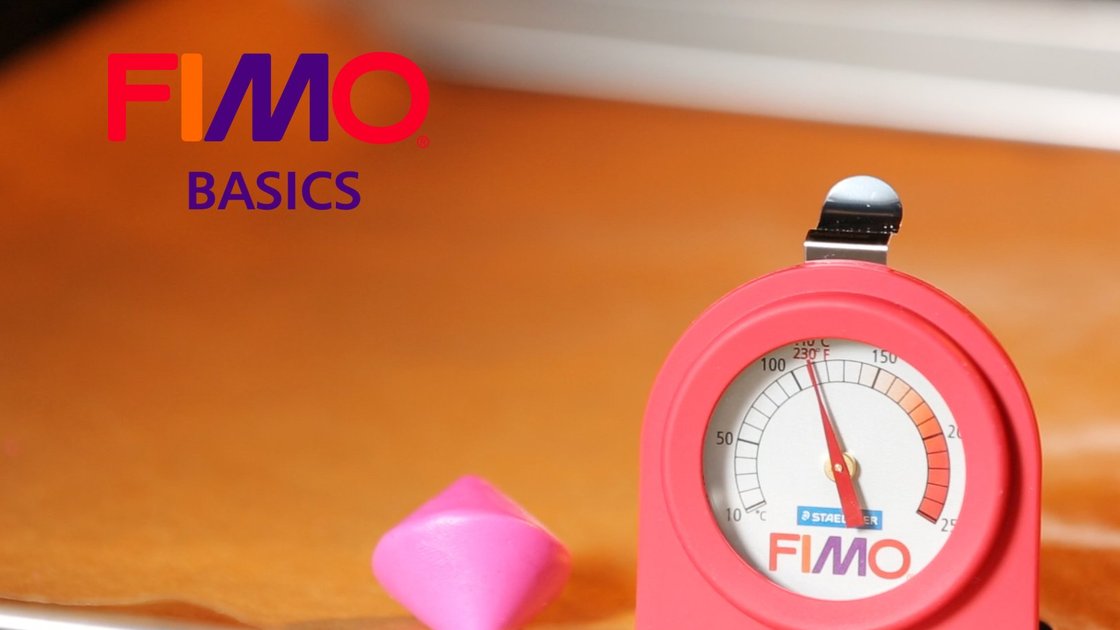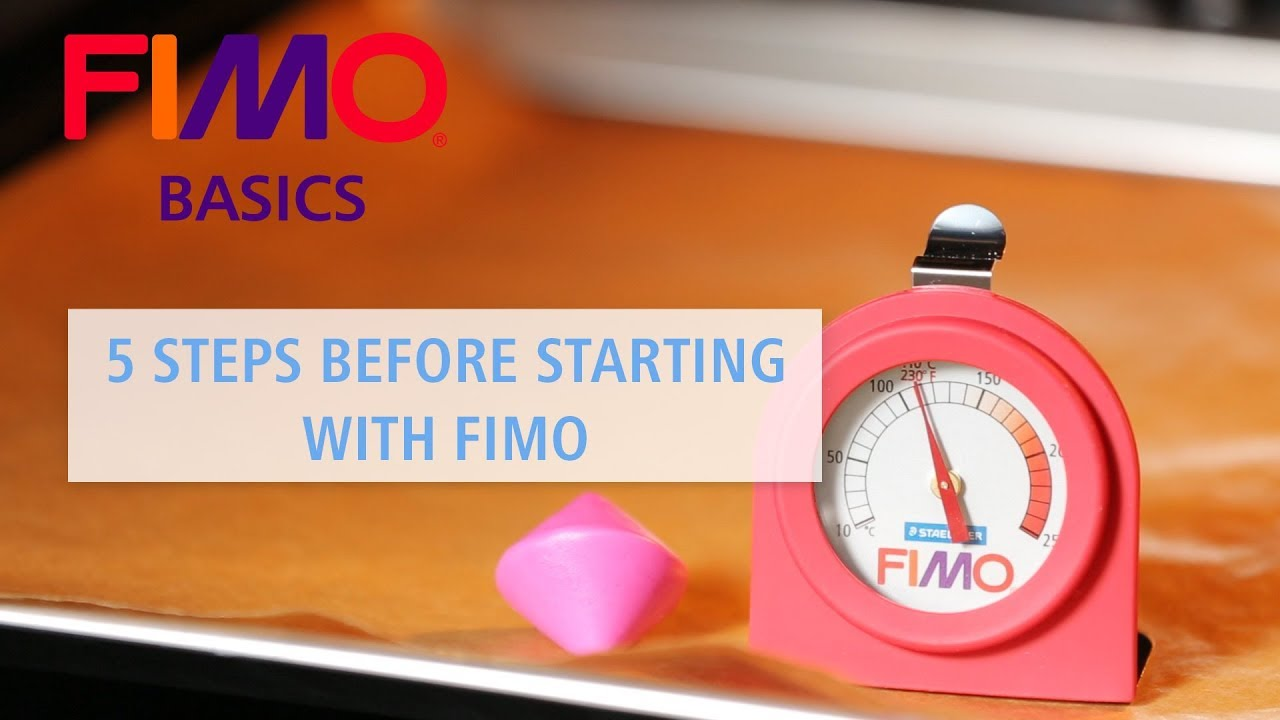
Creating beautiful jewellery/accessories, beautiful home deco items or personalised gifts using this modelling clay is not just a whole lot of fun. You will also be very proud of your very own creations. To ensure success from the get-go, you should always follow certain guidelines when working with FIMO modelling clay. If you want to get crafting with FIMO modelling clay, there is a whole world of ideas out there. Instructions on how to proceed with your crafting can be found in this guide.

This video is provided through the third-party provider YouTube, a Google service. Allow Google services to be used on this website to view YouTube videos. You can also give this consent for just this video:
Further details can be found in our privacy policy. You can also revoke your consent there. | About us
Before you can begin working with the FIMO modelling clay, you should take the following steps:
There are a few different surfaces that are suitable for working with FIMO:
The main reasons for these specific surfaces are: For one, they all have very flat surfaces. This prevents any unwanted textures on the underside of your FIMO creations. On the other hand, the modelling clay will also be very easy to remove from these surfaces, thanks to their quality and finish.
It is best to clean your work surface as well as your hands using a damp cloth. This is gentle on the skin (if you are working with FIMO quite a lot) and removes dust as well as impurities that would otherwise be transferred to your modelling clay.
Before you can work with your FIMO, the right coloured block needs to be unpacked. There is a tab on the back of the block that allows you to easily pull both sides apart. It is important to pull the packaging off correctly. That way it stays in one piece. If you do this, you can later pack the modelling clay back into its original packaging and help it keep for longer.
It is often the case, that users of the oven-hardening modelling clay FIMO ask "how do I bake FIMO in the oven?" – but we are talking about “hardening in the oven". FIMO becomes hard when it is cured – the colour and shape of the models stay virtually identical.
To properly harden FIMO, the oven should be preheated to 110°C. You then need to place your modelled FIMO artwork into the oven for 30 minutes. As every oven is slightly different, it is recommended to use an oven thermometer, so your model will not burn or turn an unpleasant burnt colour. It is very important that this temperature is not exceeded while you harden your FIMO.
If you would like to read again how to properly cure FIMO: The back of every FIMO packet has detailed instructions on the hardening process!
Good to know: Along with the oven-hardening modelling clay, there is also a self-hardening version, FIMOair. The FIMOair versions are light, natural and basic for drying at room temperature. The advantage: These types of FIMO do not need to be hardened in an oven.
If there is any FIMO modelling clay left over once you have finished with your creations, then this can be stored and used later. It is important for air-drying FIMOair to be packed as airtight as possible. Oven-hardening FIMO does not need to be stored in an airtight container, but should be kept away from dust. FIMO should also be stored away from heat and sunshine. We recommend storing it in aluminium foil or PE bags in a cool and dry place. Avoid contact with polystyrene or PVC.
Once you have properly unpacked the modelling clay, you can use it to model whatever you like. To begin, you should knead the clay to soften it, which makes it easier to mould.
You can either model your clay with your bare hands, e.g. for making beads and beautiful pieces of jewellery. In addition to that, you can also use a variety of FIMO modelling tools. For example, the following tools are perfect for doing this:
FIMO ® 8700 05 Acrylic roller Blistercard containing an Acrylic roller
FIMO ® 8700 08 Grind'n polish set Blistercard Grind´n polish set, 3 different grades of sanding sponges (fine, superfine, microfine)
FIMO ® 8711 Modelling tools Wallet containing 4 different modelling tools
FIMO ® 8700 04 Blades Blistercard with mixed blade set, 3 pieces (1 rigid, 1 flexible and 1 serrated blade), 2 rubber grips
FIMO ® 8700 22 Oven thermometer Blistercard containing 1 Oven thermometer
FIMO ® 8712 Bead rollers Set containing bead roller for 3 different shapes of beads incl. detailed brochure
Tip: Kneading FIMO is also a great way to promote tactile perception in children. By feeling and working with modelling clay, the child will understand how to work with a variety of different materials. When children work with FIMO, it promotes creativity, spatial awareness and imagination as well as improving their motor skills. A detailed, child-friendly FIMO crafting guide can be found in every packet of FIMO kids.
Hobby artists will probably prefer to use FIMO soft, because this modelling clay is soft, making it easier to shape and mould. It is incredibly easy to create beautiful works of art, like accessories or home deco items using the DIY complete set. The corresponding FIMO modelling clay guide is also included in this pack. It also includes a picture of how your finished work of art can look – as a guide for you to use.
More advanced and proficient users can then look into FIMO professional to let their creative flag fly!